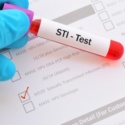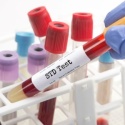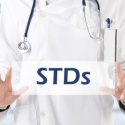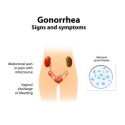
STIs are on the rise among young women so it’s important to make appointments for annual screenings if you are sexually active. With ‘silent’ symptoms, annual testing for sexually transmitted diseases is key. Unless diagnosed through testing, you may not know you have an STD.
GET TESTEDWho is Most at Risk
Women with a new or multiple sexual partners, or a sex partner with a sexually transmitted infection, are more at risk for developing an STD or STI.
READ STD/STI ARTICLES
STIs Have No Symptoms
Women diagnosed with chlamydia or other STIs are at higher risk of infertility and pelvic inflammatory disease (PID). What’s more is that chlamydia and PID are known as “silent” infections. Many women may not know that a sexually transmitted disease can result in infertility. Chlamydia historically accounts for the largest proportion of reported STIs in the United States. The damage caused by chlamydia can result in infertility. With most women experiencing no symptoms, getting tested is the only way to know for sure if you have an STI.
STIs Can Result in Infertility and Infant Death
As infections continue to rise, more women will develop PID. Left untreated, about 10-15% of women will develop chlamydia with PID, which can also cause fallopian tube infection. This infection in the upper genital tract may cause permanent damage to the uterus, fallopian tubes and surrounding tissue, which can lead to infertility.
STIs don’t just affect women. Congenital syphilis — when an infected mom passes the disease on to their babies — put their babies at risk of death or severe health problems such as deafness or blindness. In fact, annual congenital syphilis have surged, resulting in increased stillbirths and infant deaths.
Take Control: Protect Yourself and Your Sexual Partners
Following are the best methods to prevent contracting or spreading an STI:
Abstaining from Sex – The most reliable way to avoid an STD or STI is to not have sex. This include anal, vaginal or oral sex.
Reduce Number of Sex Partners – You can reduce your risk for STIs by reducing your number of sex partners, getting yourself tested, having your partner tested, and sharing the test results with one another.
Mutual Monogamy – Being sexually active with just one partner, and one who has agreed to be sexually active with only you can reduce the risk of STDs. Have an open and honest conversation with your partner about to be sure you are not infected with an STD.
Use Condoms – Using the right type of condoms correctly and consistently is very effective in reducing the spread of STIs. Use a condom every time you have vaginal, anal or oral sex.
Protect Your Vaginal Health – Get Tested
It’s important to know your STD status, not just for yourself but for your partner, future sex partners and your baby if you are pregnant or decide to become pregnant.
Many STIs can be easily diagnosed and treated. Ask your OB/GYN to test you for STDs. This is the only way to know whether you are receiving the right tests. It’s as simple as having a blood test and pelvic exam.
Have Your Partner Get Tested – and Share Your Results
Your partner may have an STD and not even know. Asking your partner to be tested – and following up with the necessary steps to prevent further spreading of the STD if they do have an infection – is one of the ways you can help prevent the spread. Share your results with one another and have open and honest conversations to help prevent transmission.
If either you or your partner is infected, both of you need to receive treatment at the same time to avoid getting re-infected.
Make an Appointment Today
Getting tested for STDs and STIs is common and very routine. Our compassionate and understanding OB/GYNs are here to help you. Call us today at 770.720.7733 to make a confidential appointment or simply Schedule an appointment online.
STD/STI Education Articles

The Different Types of STDs

What is the Difference Between an STI and an STD?

Should I Get Tested for STIs?

Alarming Rise of STDs in Georgia

Can Chlamydia Cause Infertility?

The Silent Symptoms of STIs and Their Unknown Risks

What Causes Painful Sex?

STD/STI Facts: Prevention, Diagnosis and Treatment

Can Mouthwash Cure Gonorrhea?



